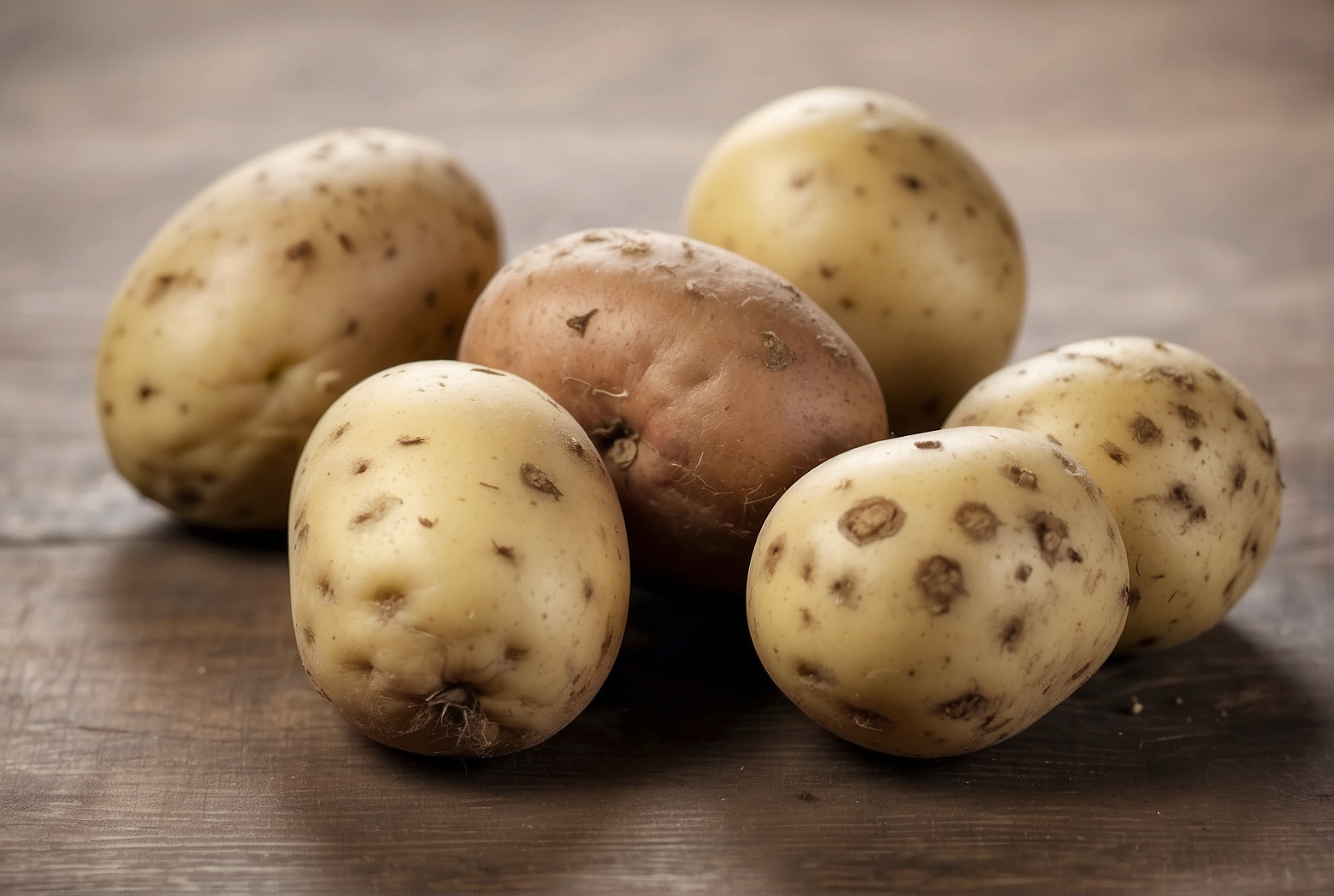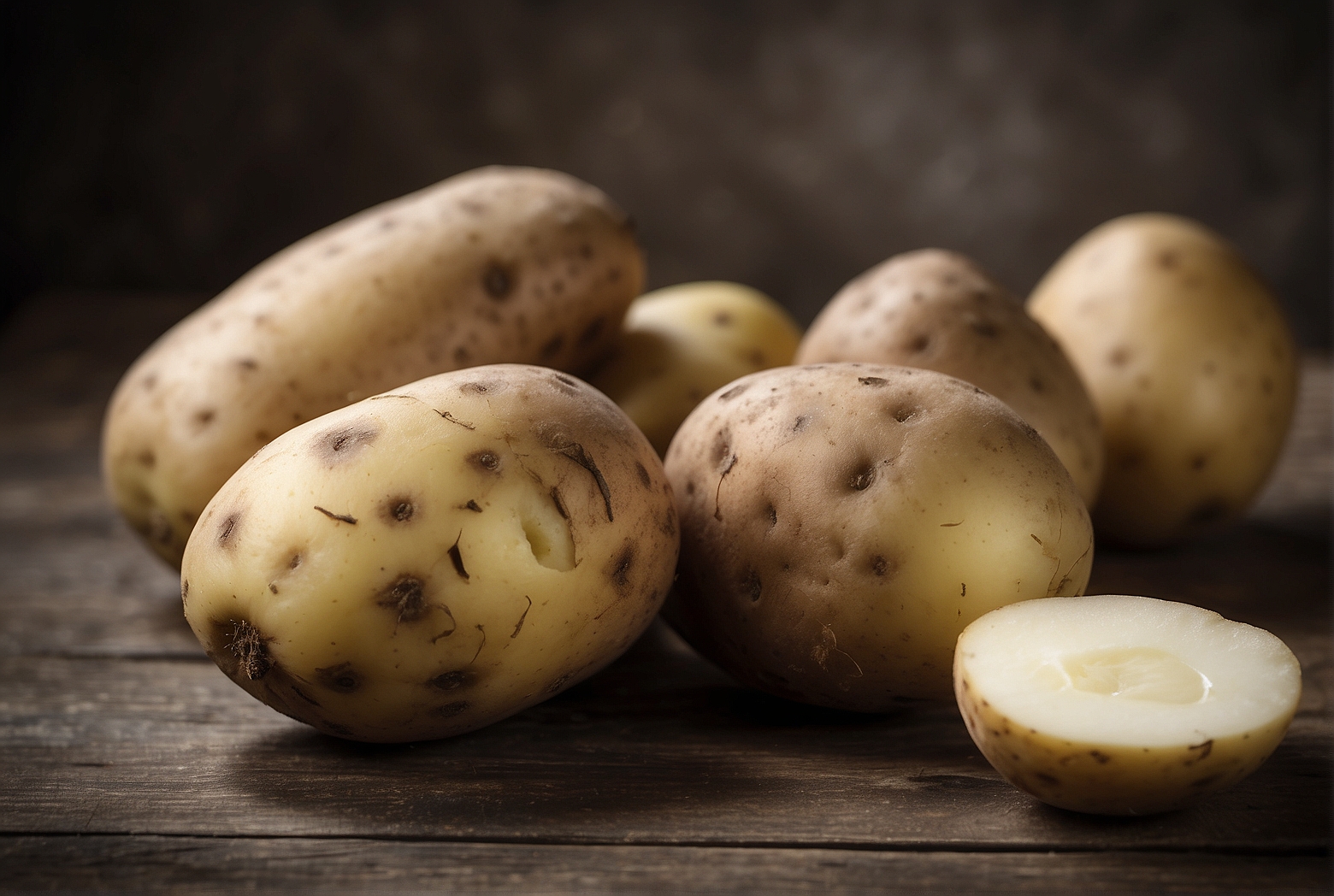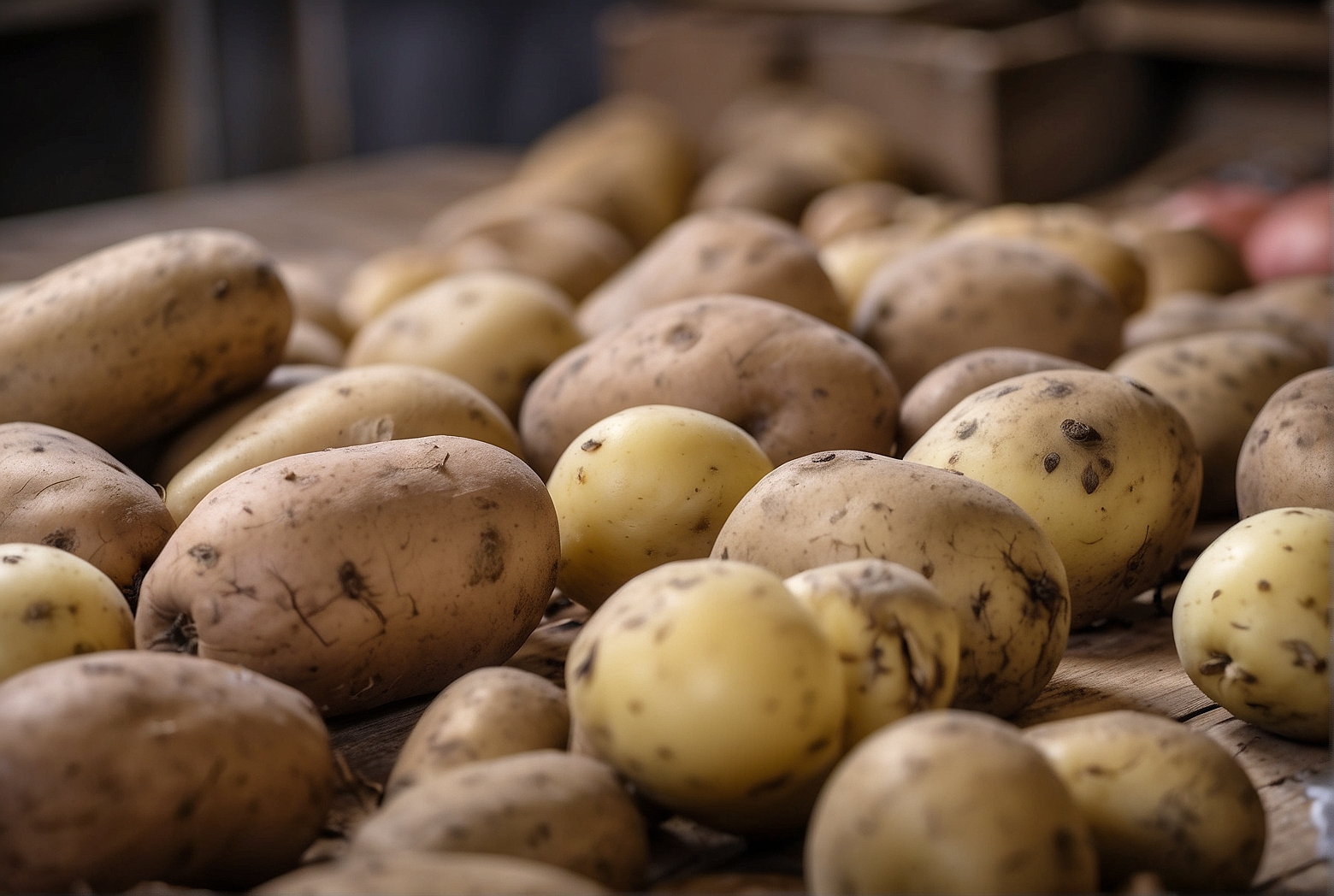Last Updated on March 31, 2024 by Tony Manhart
Potato lovers rejoice! If you’ve ever found yourself pondering the fascinating world of russet potatoes, you may have wondered whether they fall under the category of determinate or indeterminate varieties. Well, wonder no more, for in this article, we will uncover the truth behind the nature of these delicious tubers. Get ready to delve into the intricacies of russet potatoes and uncover the answer to this captivating question.
Determinate and Indeterminate Potatoes
Potatoes are one of the most versatile and beloved vegetables worldwide. They come in a wide variety of shapes, sizes, and colors, each with its own unique characteristics. When it comes to potato plants, two terms often come up – determinate and indeterminate. In this article, we will explore the definitions of determinate and indeterminate potatoes, their characteristics, and the practical implications of each type.
Definition of determinate and indeterminate
Determinate and indeterminate are terms used to describe the growth habit of potato plants. Determinate potatoes, also known as bush-type potatoes, have a compact and bushy growth habit. These plants reach a certain height and then stop growing vertically. Indeterminate potatoes, on the other hand, have a more sprawling and vine-like growth habit. They continue to grow and produce new foliage throughout the growing season.
Characteristics of determinate and indeterminate potatoes
Determinate potatoes have a more controlled growth pattern. They tend to be smaller in size and have a limited number of stems and leaves. These plants are often well-suited for small gardens or containers since they take up less space. Indeterminate potatoes, on the other hand, have a more sprawling nature. They can be larger, with multiple stems and leaves reaching out in different directions. These plants generally require more space to grow and are often found in larger gardens or fields.

Different Types of Potatoes
Potatoes come in a wide range of varieties, each with its own unique flavor, texture, and culinary uses. While there are numerous varieties to choose from, let’s focus on one popular type – the russet potato.
Overview of russet potatoes
Russet potatoes are known for their rough and netted brown skin and their creamy white flesh. They are starchy potatoes, making them ideal for baking, mashing, or frying. Russets have a rich, earthy flavor that pairs well with a variety of dishes and cuisines. Due to their high starch content, they have a fluffy and light texture when cooked, making them a favorite for making perfect mashed potatoes or crispy french fries.
Other potato varieties
Apart from the russet potato, there are numerous other varieties of potatoes available. Some popular ones include the Yukon Gold, which has a buttery and slightly sweet flavor, the red potato, which has a thin and smooth skin with a creamy texture, and the fingerling potato, which is small and elongated with a firm texture. Each variety has its own unique characteristics that make them suitable for different cooking methods and flavors.
Growth Habit of Potatoes
The growth habit of potato plants plays a crucial role in determining their suitability for specific growing conditions and gardening preferences. Understanding the differences between determinate and indeterminate potato plants is essential for successful cultivation.

Distinguishing determinate and indeterminate potato plants
Determinate potato plants can be identified by their compact and bushy appearance. They tend to have a limited number of stems and leaves, with a more controlled growth pattern. In contrast, indeterminate potato plants have a sprawling growth habit, extending their stems and leaves in different directions. They continuously produce new foliage throughout the growing season, making them appear more vine-like in nature.
Factors affecting potato growth habit
The growth habit of potato plants can be influenced by several factors. Genetic factors play a significant role, as different potato varieties have inherent characteristics that determine whether they are determinate or indeterminate. Environmental conditions, such as temperature, light exposure, and the availability of nutrients, also impact the growth habit of potatoes. Understanding and optimizing these factors can help in achieving the desired growth pattern for potato plants.
Determinate Potato Characteristics
Determinate potatoes have distinct characteristics that set them apart from indeterminate varieties. Understanding these characteristics can help gardeners choose the most suitable potatoes for their specific needs.
Description of determinate potato plants
Determinate potato plants are characterized by their compact and bushy growth habit. They have a predetermined height, usually reaching between 2 to 3 feet, and a limited number of stems and leaves. This controlled growth pattern makes them ideal for growing in smaller spaces, such as raised beds or containers. Determinate potatoes tend to have an earlier maturity period, making them suitable for gardeners looking for a quicker harvest.
Advantages and disadvantages of determinate potatoes
The compact and controlled growth habit of determinate potatoes comes with its own set of advantages and disadvantages. One advantage is their suitability for smaller gardens, urban spaces, or container gardening. They take up less space and are easier to manage compared to their sprawling counterparts. Additionally, determinate potatoes tend to produce a more concentrated yield, making harvest and handling more manageable. However, their limited growth potential can be a disadvantage for those looking for a continuous supply of potatoes throughout the growing season.
Indeterminate Potato Characteristics
Indeterminate potatoes possess unique characteristics that differentiate them from determinate varieties. Understanding these characteristics is crucial for gardeners who prefer a larger and more continuous potato harvest.
Description of indeterminate potato plants
Indeterminate potato plants have a sprawling growth habit, with multiple stems and leaves extending in various directions. Unlike determinate potatoes, they do not have a predetermined height limit and continue to grow and produce new foliage throughout the growing season. This versatility allows for a more continuous supply of potatoes and an extended harvest period.
Advantages and disadvantages of indeterminate potatoes
The sprawling growth habit of indeterminate potatoes offers several advantages. Firstly, they allow for a larger yield and a more prolonged harvest, providing a steady supply of fresh potatoes. Additionally, because the plants keep growing and producing new foliage, they often have a more robust root system, which can lead to increased tuber production. On the other hand, the sprawling nature of indeterminate potatoes requires more space and can be challenging to manage in smaller gardens or containers. Harvesting and handling may also be more time-consuming due to their continuous growth.
Russet Potatoes
Now that we have a better understanding of determinate and indeterminate potatoes, let’s focus on the popular russet potato and its unique characteristics.
Introduction to russet potatoes
Russet potatoes, also known as Idaho potatoes, are one of the most widely consumed potato varieties. They are named after their rough and netted brown skin, which resembles the appearance of a russet cloth. Russets are high in starch content, giving them a fluffy and light texture when cooked. They are versatile in the kitchen and can be used for baking, mashing, frying, or roasting.
Nutritional value of russet potatoes
Russet potatoes are not only delicious but also offer several nutritional benefits. They are a good source of carbohydrates, providing energy to fuel your daily activities. They also contain essential minerals such as potassium, which is crucial for maintaining proper heart function and healthy blood pressure. Additionally, russets are rich in dietary fiber, promoting digestive health and aiding in weight management.
Common uses of russet potatoes
Russet potatoes are known for their versatility and are used in a variety of culinary applications. They are popularly used for baking, creating fluffy and tender potatoes with a crispy skin. Russets are also excellent for making mashed potatoes, as their high starch content results in a smooth and creamy texture. Additionally, they make delicious french fries when cut into long, thin strips and deep-fried to a golden brown.
Are Russet Potatoes Determinate or Indeterminate?
Now, let’s explore whether russet potatoes are determinate or indeterminate.
Evaluation of russet potatoes’ growth habit
Russet potatoes have a determinate growth habit. They tend to have a compact and bushy appearance, with a limited number of stems and leaves. These plants reach a specific height and then stop growing vertically. This growth pattern is advantageous for gardeners with limited space or those who prefer a more controlled growth habit.
Discussion on determinate or indeterminate classification
While most russet potato varieties are determinate, it is essential to note that not all russet potatoes share the same growth habit. Some russet potato varieties may exhibit indeterminate characteristics, especially when grown under certain environmental conditions or influenced by genetic factors. It is always recommended to check the specific variety and consult with local experts or seed suppliers to determine the growth habit of the russet potatoes you plan to cultivate.
Factors Affecting Russet Potato Growth Habit
Various factors influence the growth habit of russet potatoes. Let’s delve into these factors to gain a better understanding.
Examination of genetic factors
Genetic factors play a pivotal role in determining the growth habit of russet potatoes. Different potato varieties, including russets, possess their own inherent characteristics that affect their growth pattern. It is crucial to select and cultivate russet potato varieties known for their determinate growth habit if that is your preference. Consulting with plant breeders or knowledgeable experts can assist in selecting the most suitable cultivars for your specific needs.
Influence of environmental conditions
Environmental conditions also impact the growth habit of russet potatoes. Factors such as temperature, light exposure, humidity, and soil quality can affect the growth patterns and overall health of the plants. It is essential to provide optimal conditions for russet potatoes to thrive and reach their full potential. Adequate sunlight, well-drained soil, and the appropriate spacing between plants can contribute to a healthier and more productive crop.
Practical Implications
Now that we have explored the growth habit and characteristics of russet potatoes, let’s delve into some practical implications for growing and harvesting them.
Tips for growing russet potatoes
To successfully grow russet potatoes, start by selecting healthy and certified seed potatoes from a reliable source. Prioritize planting in well-drained soil with a pH between 5.0 and 6.5, ensuring proper nutrient availability. Plant the seed potatoes about 4-6 inches deep and space them approximately 12-15 inches apart, allowing room for the potatoes to grow. Regularly water the plants, ensuring consistent moisture in the soil without waterlogging. Monitor for common pests and diseases and take appropriate measures to protect your crop.
Harvesting and storage considerations
When it comes to harvesting russet potatoes, wait until the plants’ foliage turns yellow and dies back—a clear sign that the tubers have reached maturity. Dig up the potatoes gently, avoiding any damage or bruising. Allow them to dry and cure in a cool, dark, and well-ventilated area for a week or two to enhance their flavor and improve shelf life. Store the harvested potatoes in a cool and dry location, preferably between 45-55°F (7-13°C), to maintain their quality for an extended period.
Conclusion
In conclusion, understanding the determinate and indeterminate growth habits of potatoes is crucial for successful cultivation. While russet potatoes are predominantly determinate in nature, it is essential to consider specific genetic factors and environmental conditions that can influence their growth pattern. Russet potatoes offer a versatile and tasty addition to any plate, with their unique characteristics making them suitable for various culinary applications. Whether you prefer the controlled growth of determinate potatoes or the continuous harvest of indeterminate ones, selecting the appropriate potato variety, optimizing growing conditions, and following proper cultivation practices will lead to a bountiful harvest and delicious meals on your table. So go ahead, explore the world of potatoes and savor the delights they have to offer!
Tony Manhart is a passionate gardener who has been tending to gardens for over 20 years. He takes pride in creating beautiful outdoor spaces with plants, trees, and shrubs that can thrive in any environment. He loves to share his knowledge with others and has taught classes on gardening basics and advanced techniques. He is committed to sustainability, using natural and organic methods to create and maintain gardens. He also works with local organizations to create green spaces for communities. When he’s not gardening, Tony enjoys hiking, reading, and spending time with his family.

